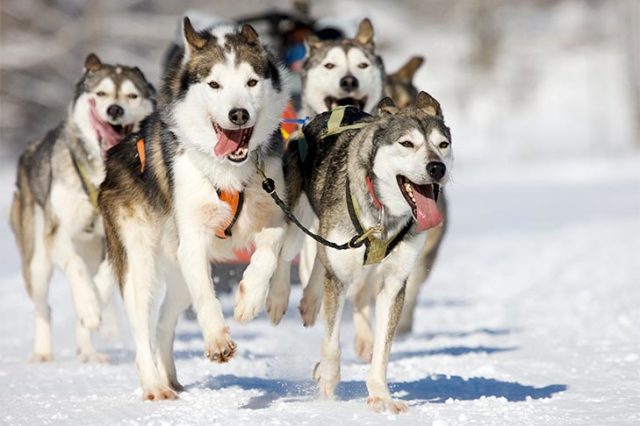The original sled dogs were chosen for size, strength and stamina, but modern dogs are bred for speed and endurance. Sled dogs have a very efficient gait, and mushers strive for a well balanced dog team that matches all dogs for both size and gait or the walking, trotting or running speeds of the dogs as well as the 'transition speed where a dog will switch from one gait to another so that the entire dog team moves in a similar fashion which increases overall team efficiency. They can run up to 45 km/h (28 mph). Because of this, sled dogs have very tough, webbed feet with closely spaced toes. Their webbed feet act as snow shoes.
A dog's fur depends on its use. Freight dogs should have dense, warm coats to hold heat in, and sprint dogs have short coats that let heat out. Most sled dogs have a double coat, with the outer coat keeping snow away from the body, and a waterproof inner coat for insulation. In warm weather, dogs may have problems regulating their body temperature and may overheat. Their tails serve to protect their nose and feet from freezing when the dog is curled up to sleep. They also have a unique arrangement of blood vessels in their legs to help protect against frostbite.
Appetite is a big part of choosing sled dogs. Picky dogs off trail may be pickier on the trail. They are fed high-fat diets, and on the trail may eat oily salmon or blubbery sea mammals. Sled dogs also must not be overly aggressive with other dogs.

